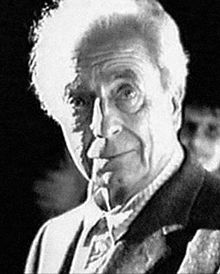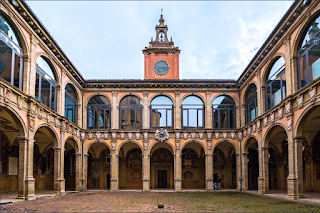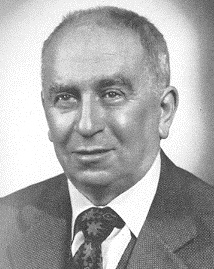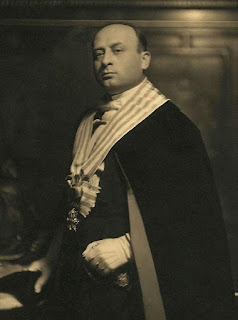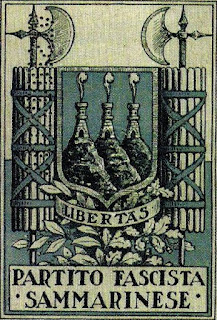Sicilian ‘Little Caesar’ who established New York’s Five Families
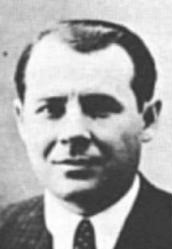 |
| Salvatore Maranzano had a mission to kill rival boss |
Maranzano’s position as ‘capo di tutti capi’ - boss of all bosses - in the city lasted only a few months before he was killed, but during that time he came up with the idea of organising criminal activity in New York along the lines of the military chain of command established in ancient Rome by his hero, Julius Caesar.
His fascination with and deep knowledge of the Roman general and politician led to him being nicknamed 'Little Caesar' by his Mafia contemporaries in New York.
Installing himself and four other survivors of the Castellammarese War as bosses, he established the principle of replacing the unstructured gang rivalry in New York with five areas of strictly demarcated territory to be controlled by criminal networks known as the Five Families.
Originally the Maranzano, Profaci, Mangano, Luciano and Gagliano families, they are now known by different names - Bonanno, Colombo, Gambino, Genovese and Lucchese to be precise - but are essentially based on the same structure.
 |
| Charles 'Lucky' Luciano, pictured at the exclusive Excelsior Hotel in Rome in 1948 |
He decided to emigrate to the United States shortly after the end of the First World War. He opened a business as a real estate broker in Brooklyn, while simultaneously growing a bootlegging business, eager to cash in on the restrictions of the Prohibition Era. In time, his activity extended to prostitution and the illegal smuggling of narcotics. He became acquainted with a young mobster called Joseph Bonanno, whom he groomed for power.
Maranzano’s true purpose in going to the United States, however, was not simply for his own personal gains. He had been despatched there by Don Vito Ferro, a powerful Sicilian mafioso who had designs on seizing control of Mafia operations in the US from Giuseppe ‘Joe the Boss’ Masseria, another Sicilian but one from the Agrigento province on the south coast of the island.
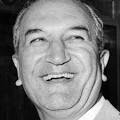 |
| Joseph Bonanno was groomed for high office in the Mafia |
Masseria was shot dead in April 1931 while playing cards at a restaurant on Coney Island. The hit had been arranged by Charles ‘Lucky’ Luciano, the former Masseria lieutenant who had defected to Maranzano’s side along with Vito Genovese, Frank Costello and others on the understanding that Masseria’s death would result in Maranzano calling off the conflict, which was impacting heavily on gang profits.
Maranzano kept his side of the bargain and Luciano was rewarded with a position of power within the Five Families structure.
However, Luciano was uneasy about Maranzano declaring himself ‘boss of all bosses’ and it was not long before he concluded that his new boss was no more forward thinking about Mafia activity than his predecessor. There were major ideological differences between the two. While Maranzano, like Masseria, trusted only fellow Sicilians, Luciano had partnerships with Jewish gangsters, of which Maranzano strongly disapproved.
Luciano decided that to leave Maranzano in charge would not be in the best interests of progress and began plotting his downfall almost immediately. In fact, Maranzano had been boss for only five months when four men, including Luciano’s Jewish associates Benjamin ‘Bugsy’ Siegel and Samuel ‘Red’ Levine, entered his office in what is now the Helmsley Building in Manhattan, posing as tax officials, and murdered him.
It left Luciano as the most powerful boss in New York City. He did nothing to change the Five Families structure Maranzano had established but, in a further measure aimed at reducing conflict between rival groups, not only in New York but across the United States, by establishing The Commission, a kind of board of directors of the American Mafia, consisting of the heads of the Five Families and the leaders of the Chicago and Buffalo crime families, who would oversee and coordinate Mafia activities across the US and mediate in disputes.
| The attractive port area at Castellammare del Golfo |
Castellammare del Golfo is a resort and fishing town overlooking a large bay in the northwest corner of Sicily, midway between Trapani and Palermo. It has an attractive setting, guarding over a broad sweep of water and with steep lanes of houses climbing the hillside from the harbour towards the elevated Piazza Petrolo. A popular backdrop for TV dramas, including some episodes of the Inspector Montalbano series, it has the remains of a castle probably built at the time of the ninth-century Arab occupation of the town, and a good selection of bars and restaurants. It is the birthplace of many American Mafia figures, including Sebastiano DiGaetano, Stefano Magaddino, Vito Bonventre, John Tartamella and Joseph Bonanno, as well as Maranzano.
| The Tempio di Giunone in the Valley of the Temples |
Agrigento, the home town of Maranzano’s rival boss Joe Masseria, is on the southern coast of Sicily and is built on the site of an ancient Greek city. Its most famous sight is the Valley of the Temples (Valle dei Templi) a large sacred area where seven monumental Greek temples were constructed during the sixth and fifth centuries BC. Situated on a ridge rather than in a valley, It is one of the most outstanding examples of Greater Greece art and architecture anywhere and at 1,300 hectares the the largest archaeological site in the world.
More reading:
How Lucky Luciano brought order among warring Mafia clans
Was Carlo Gambino the model for The Godfather?
Joe Petrosino - the Italian immigrant who fought against the mob
Also on this day:
1598: The birth of sculptor Alessandro Algardi
1969: The birth of football coach Antonio Conte
Home
